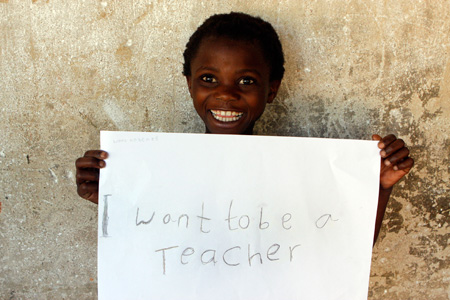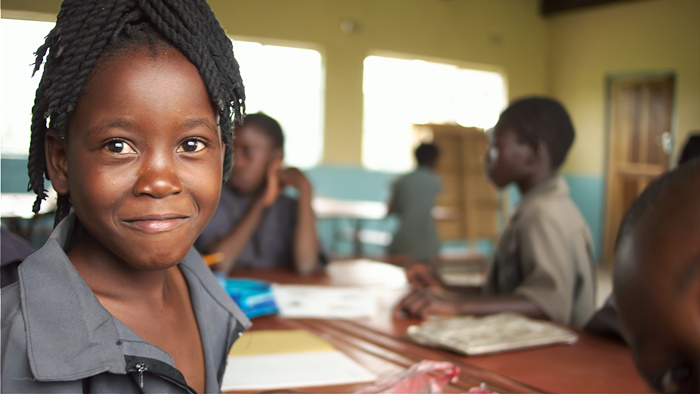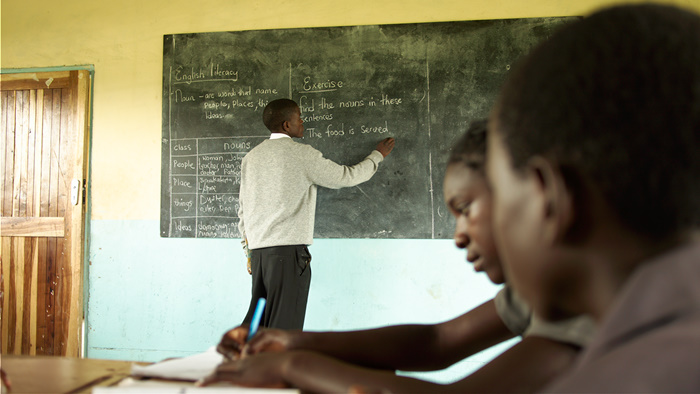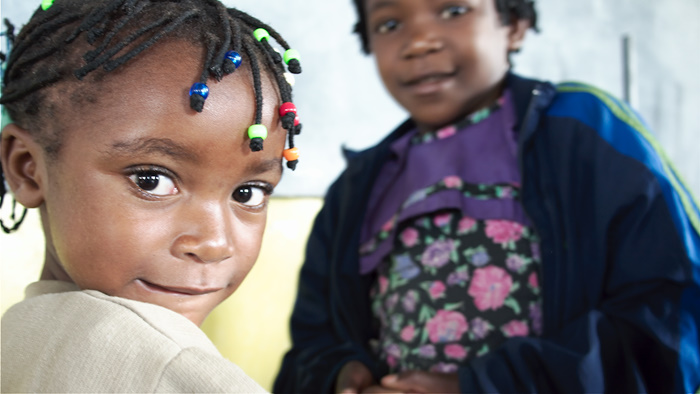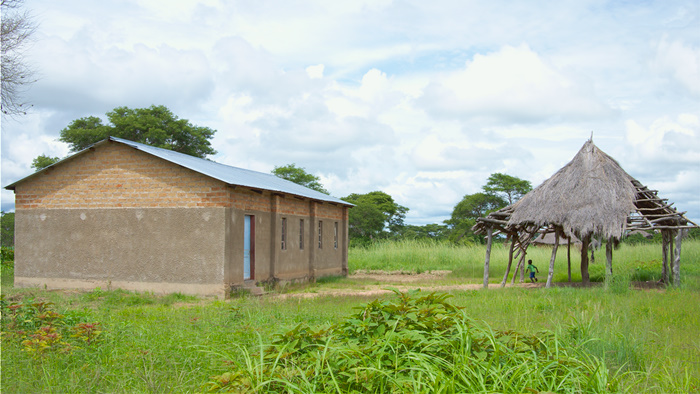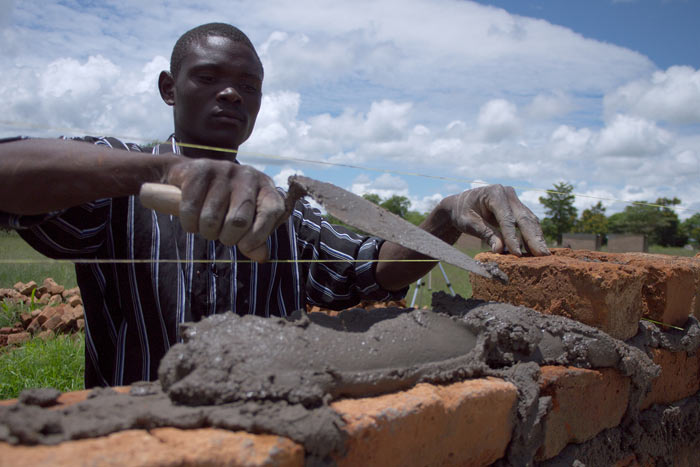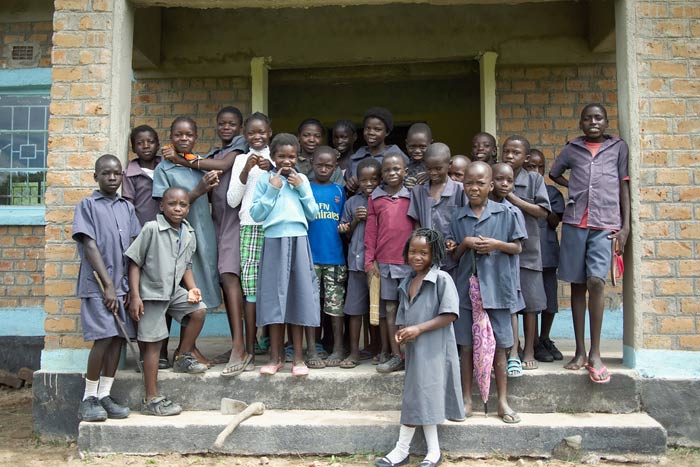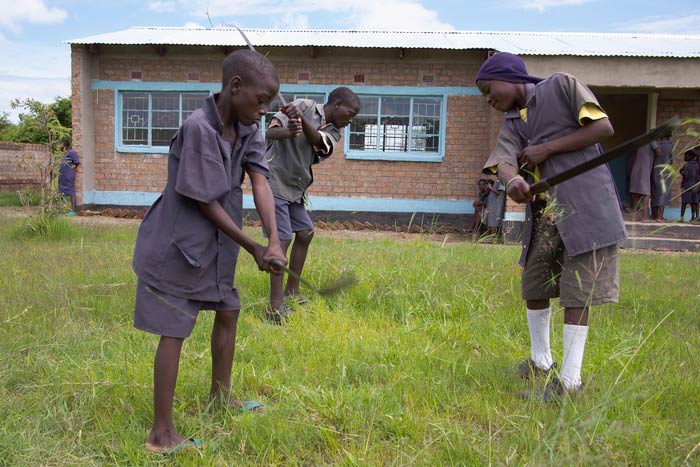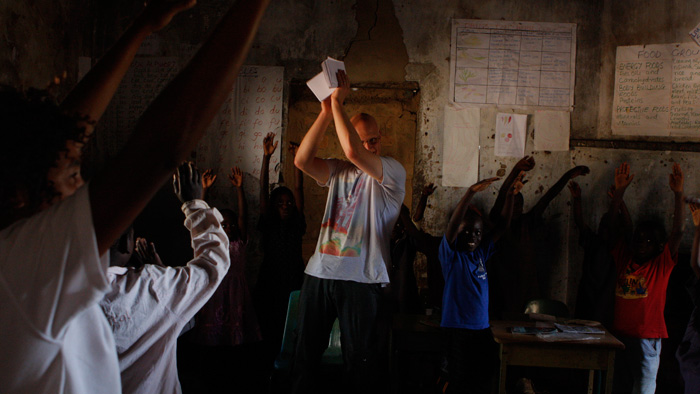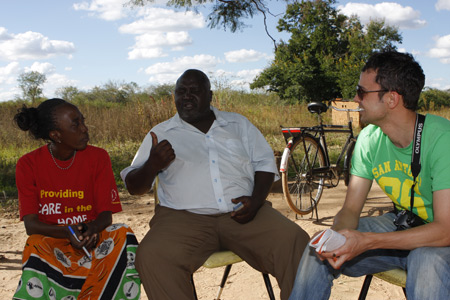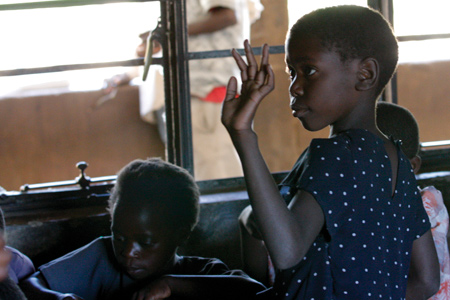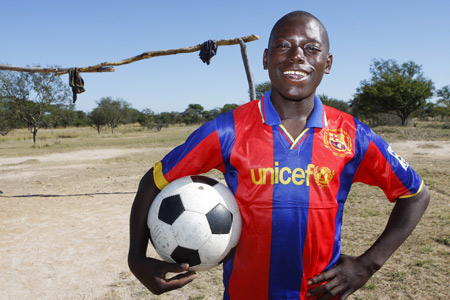It’s 23 days until the 40 minute fundraise begins. Every day until the campaign begins we’ll share something you can do to help. Today, we ask if you’ll tell people about Nshima, the staple dish of Zambia.

In Zambia a lesson lasts for 40 minutes. Will you fundraise for 40 minutes to fund new classrooms and teachers’ houses at Simakakata Community School? You can jump, busk, run, bake and much, much more. Learn more >
Over dinner tonight please add a little African flavour and tell people about Nshima. And then leading on from there tell them about where it comes from and why the people who eat it need our help.
Nshima, for those who don’t know, is the staple dish in Zambia. It’s cornmeal, boiled into a doughy starch, and served with a sauce of leafy greens, beans, tomatoes, chicken – anything that’s available that day.
One of the reasons we desperately need to help the people of Simakakata to build teachers’ houses is because the staff usually eat breakfast at 6am, and then have nothing until they get home at 5pm – a working day which involves a 14km round commute by foot or bike for most of them. It’s exhausting, but if their homes were closer by they’d be able to use their own kitchens for lunch and supper. As a result, they’d also be able to offer adult education classes after the children go home.
So that’s the conversation sorted. Try the food, it’s rather tasty. Tradition dictates that you should also eat it without cutlery, tearing off a piece of nshima, rolling it into a ball with your fingers and scooping up some sauce with it. Eating with your fingers is a very sociable way of sharing food with friends – which is one reason Zambian communities tend to be so close.
And if you could slip in a little mention of the 40 minute fundraise incase anyone wants to help that would be ace too. Thanks!
How to cook Nshima
Recipe courtesy of UKZambians.co.uk. Serves 4 people.
Nshima is the staple food for 10 million Zambians. It is eaten at least twice per day; for lunch and dinner. Another second dish, known as ndiwo, umunani, dende or relish, must always accompany nshima. The relish is always a deliciously cooked vegetable, meat, fish, or poultry dish. By comparison to other cultures, Zambian recipes tend to be bland and hardly use any hot spices at all. However, they use other traditional ingredients and spices that give Zambian foods that distinctive unique taste and flavor.
Ingredients:
- 4 Cups Water
- 2 Cups plain corn meal
Method:
Pour 4 cups of water into a medium size cooking pot. Heat the water for 3 – 4 minutes or until luke warm. Using one tablespoonful at a time, slowly sprinkle 3/4 cup of the corn meal into the pot while stirring continuosly with a cooking stick. Keep stirring slowly until the mixture begins to thicken and boil. Turn the heat to medium, cover the pot, and let simmer for 3 to 5 minutes.
Cautiously remove the top. Slowly, a little at a time, pour into the pot 1 and a quarter cups of corn meal and briskly stir with the cooking stick until smooth and thick. Stir vigorously. Sprinkle a little more corn meal and stir if you desire the nshima to be thicker or less if you want softer nshima. Cover, turn the heat off and let nshima sit on the stove for another 2 to 3 minutes.
Nshima must always be served hot with a vegetable, bean, meat or fish dish or ndiwo.


